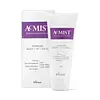What's inside
What's inside
 Key Ingredients
Key Ingredients

 Benefits
Benefits

 Concerns
Concerns

No concerns
 Ingredients Side-by-side
Ingredients Side-by-side

Water
Skin ConditioningCyclopentasiloxane
EmollientDimethicone
EmollientCetearyl Alcohol
EmollientC13-15 Alkane
SolventSqualane
EmollientGlyceryl Stearate
EmollientSorbitan Stearate
EmulsifyingXylitylglucoside
HumectantPEG-100 Stearate
Stearic Acid
CleansingTocopheryl Acetate
AntioxidantPhenoxyethanol
PreservativeAnhydroxylitol
HumectantXylitol
HumectantPolyacrylate-13
Dimethicone Crosspolymer
Emulsion StabilisingBHT
AntioxidantPolyisobutene
Glucose
HumectantBis-Ethylhexyloxyphenol Methoxyphenyl Triazine
Skin ConditioningCetearyl Glucoside
EmulsifyingDiethylamino Hydroxybenzoyl Hexyl Benzoate
UV FilterDimethiconol
EmollientDisodium EDTA
Ethylhexylglycerin
Skin ConditioningEthylhexyl Triazone
UV AbsorberAcacia Senegal Gum
MaskingXanthan Gum
EmulsifyingSodium Hydroxide
BufferingParfum
MaskingPolysorbate 20
EmulsifyingSorbitan Isostearate
EmulsifyingC12-15 Alkyl Benzoate
AntimicrobialPhenyl Trimethicone
Skin ConditioningWater, Cyclopentasiloxane, Dimethicone, Cetearyl Alcohol, C13-15 Alkane, Squalane, Glyceryl Stearate, Sorbitan Stearate, Xylitylglucoside, PEG-100 Stearate, Stearic Acid, Tocopheryl Acetate, Phenoxyethanol, Anhydroxylitol, Xylitol, Polyacrylate-13, Dimethicone Crosspolymer, BHT, Polyisobutene, Glucose, Bis-Ethylhexyloxyphenol Methoxyphenyl Triazine, Cetearyl Glucoside, Diethylamino Hydroxybenzoyl Hexyl Benzoate, Dimethiconol, Disodium EDTA, Ethylhexylglycerin, Ethylhexyl Triazone, Acacia Senegal Gum, Xanthan Gum, Sodium Hydroxide, Parfum, Polysorbate 20, Sorbitan Isostearate, C12-15 Alkyl Benzoate, Phenyl Trimethicone
Ingredients Explained
These ingredients are found in both products.
Ingredients higher up in an ingredient list are typically present in a larger amount.
C12-15 Alkyl Benzoate is made up of Benzoic Acid and long chain alcohols. It has a low molecular weight.
C12-15 Alkyl Benzoate is an emollient and texture enhancer. Due to its solubility, it is often used in sunscreens to help evenly distribute active ingredients.
As an emollient, C12-15 Alkyl Benzoate helps soften and hydrate your skin. Emollients create a film on your skin that traps moisture within.
This ingredient has been reported to cause eye irritation.
Learn more about C12-15 Alkyl BenzoateEthylhexylglycerin (we can't pronounce this either) is commonly used as a preservative and skin softener. It is derived from glyceryl.
You might see Ethylhexylglycerin often paired with other preservatives such as phenoxyethanol. Ethylhexylglycerin has been found to increase the effectiveness of these other preservatives.
Peg-100 Stearate is an emollient and emulsifier. As an emollient, it helps keep skin soft by trapping moisture in. On the other hand, emulsifiers help prevent oil and water from separating in a product.
PEGS are a hydrophilic polyether compound . There are 100 ethylene oxide monomers in Peg-100 Stearate. Peg-100 Stearate is polyethylene glycol ester of stearic acid.
Phenoxyethanol is a preservative that has germicide, antimicrobial, and aromatic properties. Studies show that phenoxyethanol can prevent microbial growth. By itself, it has a scent that is similar to that of a rose.
It's often used in formulations along with Caprylyl Glycol to preserve the shelf life of products.
Squalane is an emollient that helps the skin hold onto moisture. It's an oily liquid that occurs naturally in certain types of fish and plant oils.
Because squalane boosts hydration in the skin, it also comes with plenty of benefits: it is an antioxidant and can help fight free radicals and skin damage. Squalane is also found to have a detoxifying effect when applied.
Squalane comes from squalene, which occurs naturally within the sebum of our skin. It is one of the oils our skin produces to keep itself hydrated. Squalane is the hydrogenated version of squalene and has a longer shelf life.
Research shows that squalane is non-irritating (even at 100% concentration).
In general, it's a fantastic ingredient. It does a great job at hydrating the skin, and it's suitable for those with sensitive skin.
The source of squalane may impact malassezia / fungal acne. This is because olive oil derived squalane can contain impurities such as fatty acids and plant waxes. Sugarcane derived squalane is recommended for anyone with malassezia concerns.
Is squalane vegan?
This depends on the source. Squalane can be derived from both plants and animals. Most squalane used in skincare comes from plants.
Please note: the source of squalane is only known if disclosed by the brand. We recommend reaching out to the brand if you have any questions about their squalane.
Read more about squalene with an "e".
Is squalane an oil?
Squalane is often called an oil, but it’s technically not; it’s a hydrocarbon, meaning it’s only made of carbon and hydrogen, unlike true oils which are triglycerides made of fatty acids and glycerol.
The term “oil-free” isn’t regulated, so companies can define it however they want. Some exclude all oils, while others just avoid mineral oil or comedogenic oils.
While some people avoid oils thinking they cause breakouts, the right kind of oil (or oil-like ingredient like squalane) can actually help balance and hydrate your skin. It’s worth testing out simple oils or squalane to see what works best for your skin.
Learn more about SqualaneTocopheryl Acetate is AKA Vitamin E. It is an antioxidant and protects your skin from free radicals. Free radicals damage the skin by breaking down collagen.
One study found using Tocopheryl Acetate with Vitamin C decreased the number of sunburned cells.
Tocopheryl Acetate is commonly found in both skincare and dietary supplements.
Learn more about Tocopheryl Acetate